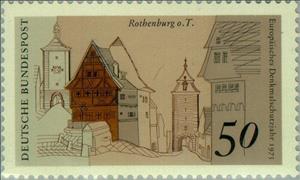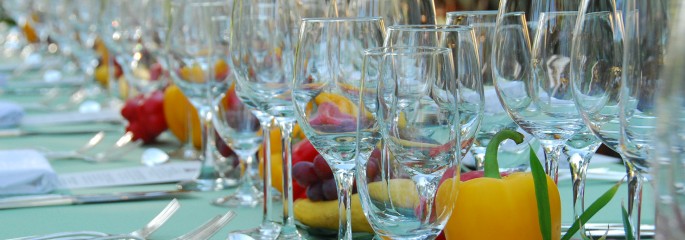Stamp: Sieberstower, Plönlein, Kobolzell gate, Rothenburg o.d.T. (Germany, Federal Republic 1975)
Sieberstower, Plönlein, Kobolzell gate, Rothenburg o.d.T. (Germany, Federal Republic 1975)
15 July (Germany, Federal Republic ) within release European Monuments Year goes into circulation Stamp Sieberstower, Plönlein, Kobolzell gate, Rothenburg o.d.T. face value 50 German pfennig
| Stamp Sieberstower, Plönlein, Kobolzell gate, Rothenburg o.d.T. in catalogues | |
|---|---|
| Michel: | Mi:DE 861 |
| Stamp Number: | Sn:DE 1197 |
| Yvert et Tellier: | Yt:DE 710 |
Stamp is horizontal format.
European Architectural Heritage Year: Plonlein Corner, Siebers Tower and Kobolzeller Gate, RothenburgAlso in the issue European Monuments Year:
- Stamp - Main Market Square with Town Hall, Alsfeld face value 50;
- Stamp - Sieberstower, Plönlein, Kobolzell gate, Rothenburg o.d.T. face value 50;
- Stamp - Die Steipe, Trier face value 50;
- Stamp - Total view on Xanten face value 50;
Stamp Sieberstower, Plönlein, Kobolzell gate, Rothenburg o.d.T. it reflects the thematic directions:
A house is a single-unit residential building. It may range in complexity from a rudimentary hut to a complex structure of wood, masonry, concrete or other material, outfitted with plumbing, electrical, and heating, ventilation, and air conditioning systems. Houses use a range of different roofing systems to keep precipitation such as rain from getting into the dwelling space. Houses generally have doors or locks to secure the dwelling space and protect its inhabitants and contents from burglars or other trespassers. Most conventional modern houses in Western cultures will contain one or more bedrooms and bathrooms, a kitchen or cooking area, and a living room. A house may have a separate dining room, or the eating area may be integrated into the kitchen or another room. Some large houses in North America have a recreation room. In traditional agriculture-oriented societies, domestic animals such as chickens or larger livestock (like cattle) may share part of the house with humans.
Special Occasions
A building or edifice is a structure with a roof and walls standing more or less permanently in one place, such as a house or factory. Buildings come in a variety of sizes, shapes and functions, and have been adapted throughout history for a wide number of factors, from building materials available, to weather conditions, to land prices, ground conditions, specific uses and aesthetic reasons. Buildings serve several needs of society – primarily as shelter from weather, security, living space, privacy, to store belongings, and to comfortably live and work. A building as a shelter represents a physical division of the human habitat (a place of comfort and safety) and the outside (a place that at times may be harsh and harmful).



